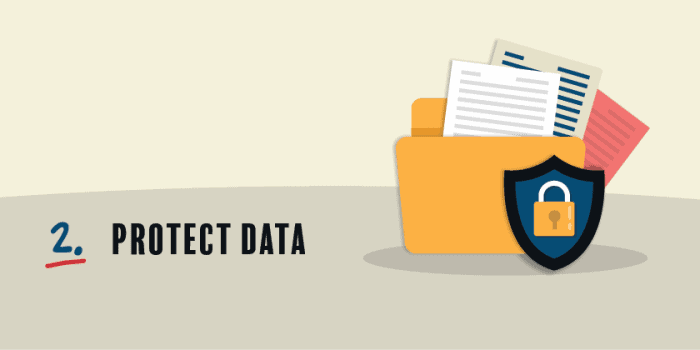Reasons Your Organisation needs an Enterprise Incident Management Solution
Published on: 15 Apr 2019
Last modified on: 23 Jul 2025
As cyber threats continue to grow and evolve, it’s inevitable that businesses will experience an information security incident at some point.
Cyber security breaches are now occurring on an almost daily basis and the IDC predicts that by 2020, more than 1.5 billion people, or roughly 1/4 of the world’s population, will be affected by a data breach.
Despite the frequency of these attacks, as many as 75% of companies have no Incident Management plan in place. This, coupled with an average time of 175 days to detect a breach, means many organisations are woefully underprepared and vulnerable to serious cyber attacks.
To effectively deal with these threats, organisations must have a structured Incident Management solution in place that enables them to rapidly identify, respond, and mitigate these types of incidents.
Failure to do so can result in significant reputational damage, and under the GDPR, organisations could be hit with huge fines if they are unable to demonstrate that they’ve taken all the necessary technical and organisational measures to ensure a high level of security.
How well your organisation responds to an incident can be the difference between a minor disruption and the demise of your business. An Incident Management solution will enable you to prepare for the unexpected and ensure a speedy response to any potential security incidents.
Benefits of using an Enterprise Incident Management
There are many reasons why your organisation should implement an Enterprise Incident Management Solution:
1. Establish Procedures

A well-structured Incident Management solution will establish procedures that will help detect, respond and limit the effects of a security incident. The first stage will be conducting a detailed risk assessment to address potential threats. This could be from phishing, ransomware, or even employees working remotely with unsecured devices. Organisations can then determine which areas present the highest security risk and need to be strengthened.
The next step is establishing a set of security policies that will define an incident, how the incident will be handled, who will handle the incident and what tools will be used to manage incident response. These procedures will enable organisations to react swiftly and effectively in the event of a security incident.
2. Protect Data

The continual stream of data breaches has highlighted the fact that it’s not a matter of ‘if’ but ‘when’ an organisation will be attacked. Data is a valuable commodity and one of the most important assets that any organisation holds. To prevent this data from falling into the wrong hands, your organisation will need to have a thorough plan in place that details how information will be safeguarded and what protocols should be followed in the event of an incident.
An incident response process will outline important procedures to be followed such as:
- Identifying valuable data
- Initiating security alerts to detect malicious activity
- Regular back-ups
- Patch management
- Restricting access to sensitive data
- Ensuring staff are knowledgeable about how to report an incident
3. Educate and Inform staff

Staff play a critical role in defending against cyber attacks. They are often the first line of defence in detecting threats and increasingly they will be the most heavily targeted. To ensure your staff know how to effectively respond to a potential security incident, they will need to receive regular cyber security awareness training. This will help raise awareness of the sensitivity of data on systems, ensure procedures are followed correctly and build a culture of enhanced security compliance.
One of the first signs of improved cyber security and compliance awareness will be an increased vigilance of potential threats and an increase in the number of incidents reported. The Incident Management solution should provide staff with an easily accessible and simple method of reporting possible problems. Organisations will then need to respond to these reported incidents in a timely manner to ensure events do not escalate.
4. Prevent fines

The implementation of the GDPR has transformed how organisations respond and report a potential security incident. Under the new legislation, organisations are now duty-bound to report data breaches and failure to do so can result in significant fines. The GDPR requires that organisations disclose any personal data breaches to the relevant supervisory authority within 72 hours of detection otherwise they may face fines of up to 4% of annual global turnover or 20 Million Euros.
Fines will depend on the severity of the breach and if organisations have taken steps to show they are compliant. Incident reporting has now taken centre stage and since the privacy law came into effect on May 2018, almost 60,000 data breach reports have been filed. Clearly, organisations now realise the importance of reacting swiftly to any potential incidents.
5. Improve Customer and Stakeholder Confidence

In addition to the financial implications of an incident that may involve paying regulatory fines, compensating customers and a drop-in share prices, organisations can be severely impacted by reputational damage.
If an organisation’s sensitive data has been exposed, it can have a hugely negative effect on consumer trust. Research has shown that up to 70% of consumers would stop doing business with a company if they have experienced a data breach. Customers lose confidence with an organisation if they don’t feel their data is secure and may end up leaving and switching to competitors.
The consequences of a security incident can be far-reaching and unless organisations have the correct Incident response procedures in place, they are putting their business at great risk.